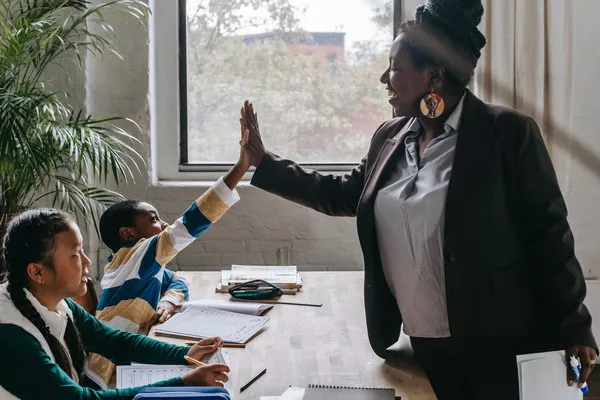Seducing an unromantic boyfriend can be a complex challenge, especially if you value emotional connection and romantic gestures in your relationship. It’s important to approach this situation with sensitivity and understanding, recognizing that people have different ways of expressing and experiencing love. From a psychological standpoint, there are effective strategies you can employ to gently encourage a more romantic and engaging connection without pressuring or manipulating your partner. This article explores various methods to cultivate romance in a relationship with an unromantic partner, blending psychological insights with practical advice.
Understanding Unromantic Behavior
Before diving into strategies, it’s essential to understand why your boyfriend might be perceived as unromantic. Unromantic behavior can stem from various factors, including personality traits, past experiences, or communication styles. Here are some key considerations:
Personality Traits: Some individuals are naturally less expressive or demonstrative when it comes to romance. For example, those with a more practical or reserved personality might struggle with traditional romantic gestures.
Cultural and Familial Background: Cultural norms and familial upbringing play a significant role in shaping how individuals express affection. Someone who grew up in a family that did not emphasize romantic gestures might find it challenging to engage in such behaviors.
Past Experiences: Previous relationships or experiences might influence how a person approaches romance. Negative experiences or unmet expectations from past relationships can impact their current behavior.
Communication Style: Differences in communication styles can affect how romantic gestures are perceived. What one person views as romantic might not resonate with someone who has a different communication style.
Building Emotional Intimacy
Fostering emotional intimacy is crucial for encouraging romantic behavior. By deepening your emotional connection, you create a foundation where romance can naturally flourish. Here are some strategies to build emotional intimacy:
Open Communication
Effective communication is the cornerstone of any strong relationship. Create a safe space where both partners can express their feelings, desires, and expectations openly. Avoid blaming or criticizing your partner; instead, use “I” statements to share your perspective.
Share Your Feelings: Express how you feel about the lack of romance in a non-confrontational way. For example, “I sometimes feel disconnected when we don’t have romantic moments together.”
Encourage Dialogue: Ask your partner about their views on romance and what makes them feel loved. This can provide insights into their preferences and help tailor your approach.
Quality Time Together
Spending quality time together helps strengthen the bond between partners. Engage in activities that you both enjoy and that foster emotional closeness.
Plan Special Activities: Organize outings or experiences that create memorable moments. This could be a weekend getaway, a cooking class, or a hike in nature.
Create Rituals: Establish routines or rituals that foster connection, such as weekly date nights or regular check-ins about your relationship.
Active Listening and Empathy
Practicing active listening and empathy can deepen your understanding of each other’s needs and desires.
Listen Actively: Show genuine interest in your partner’s thoughts and feelings. Avoid interrupting and validate their emotions.
Show Empathy: Try to understand your partner’s perspective and feelings. Empathizing with their experiences can strengthen your emotional connection and encourage reciprocal affection.
Enhancing Physical Affection
Physical affection is a key component of romance and can be a powerful way to encourage a more romantic dynamic. However, it’s important to approach this with sensitivity and respect for your partner’s boundaries.
Non-Sexual Touch
Non-sexual touch, such as holding hands, hugging, or cuddling, can help create a sense of closeness and warmth.
Initiate Touch: Start with small gestures of physical affection and gauge your partner’s response. Gradually increase the frequency and intensity of touch as your partner becomes more comfortable.
Be Attuned: Pay attention to your partner’s body language and reactions. Ensure that your gestures are welcomed and comfortable for them.
Create Intimate Moments
Cultivating intimate moments can enhance the romantic aspect of your relationship.
Surprise Gestures: Surprise your partner with thoughtful gestures that convey affection, such as leaving a sweet note or preparing a favorite meal.
Create Atmosphere: Set the mood for romance by creating a pleasant and inviting atmosphere. This could include dim lighting, soft music, or a cozy setting.
Encouraging Romantic Gestures
If your boyfriend struggles with spontaneous romantic gestures, you can gently encourage and guide him in this area. Here are some strategies to consider:
Model Romantic Behavior
Leading by example can be an effective way to inspire your partner to reciprocate with romantic gestures.
Express Affection: Regularly demonstrate your own romantic feelings through gestures, compliments, and thoughtful actions. This can help set a standard and show your partner what you value in the relationship.
Share Ideas: Share your ideas about romantic gestures in a light and casual manner. For example, you might say, “I love when people surprise their partners with small gifts—it makes them feel special.”
Encourage Creativity
Encourage your partner to express their own creativity in showing affection.
Suggest Activities: Propose activities or experiences that allow your partner to engage in romantic gestures in their own way. This could include planning a date, writing a letter, or creating a playlist of meaningful songs.
Celebrate Efforts: When your partner makes an effort to be romantic, acknowledge and appreciate their gesture. Positive reinforcement can motivate them to continue making such efforts.
See Also: How Long is It Normal Before Saying “I Love You”?
Discuss Expectations
Having a conversation about your expectations for romance can help align your desires with your partner’s actions.
Be Specific: Clearly communicate what you would like in terms of romantic gestures or behaviors. For example, “I would really appreciate it if we could have more spontaneous date nights.”
Negotiate Compromises: Understand that your partner may have different ideas about romance. Be willing to negotiate and find a balance that works for both of you.
Addressing Underlying Issues
If unromantic behavior persists despite your efforts, it’s important to address any underlying issues that may be contributing to the situation.
Explore Emotional Barriers
Unromantic behavior might be a result of emotional barriers or unresolved issues. Encourage open dialogue about any underlying concerns or insecurities.
Seek Professional Help: If necessary, consider seeking the help of a relationship counselor or therapist. Professional guidance can help address deeper issues and facilitate healthier communication.
Address Past Experiences: Explore whether past experiences or relationships might be influencing your partner’s current behavior. Understanding these influences can provide context and aid in finding solutions.
Assess Relationship Dynamics
Examine the overall dynamics of your relationship to identify any patterns or issues that may be affecting romance.
Evaluate Compatibility: Consider whether there are fundamental differences in values or expectations regarding romance. Assessing compatibility can help determine whether adjustments are feasible.
Work on Communication: Improve overall communication in the relationship to ensure that both partners feel heard and understood. Effective communication can help address and resolve issues related to romance.
Balancing Expectations and Reality
It’s important to balance your expectations with the reality of your partner’s personality and behavior. While you can encourage and guide romantic behavior, it’s essential to recognize and accept your partner’s limitations.
Focus on Strengths
Acknowledge and appreciate the strengths and positive aspects of your relationship, even if romantic gestures are not frequent. Focusing on what works well can help maintain a positive perspective.
Celebrate Positive Aspects: Highlight and celebrate the qualities and actions that you value in your partner. This can foster a sense of appreciation and reinforce positive behavior.
Practice Gratitude: Regularly express gratitude for the positive contributions your partner makes to the relationship. Gratitude can enhance overall satisfaction and strengthen the bond.
Adjust Expectations
Be willing to adjust your expectations and find ways to work within the dynamics of your relationship.
Embrace Compromise: Understand that your partner may not fully align with your vision of romance. Embrace compromise and find creative ways to meet each other’s needs.
Focus on Connection: Prioritize emotional connection and mutual support over specific romantic gestures. Building a strong foundation of trust and intimacy can lead to a more fulfilling relationship.
Conclusion
In summary, seducing an unromantic boyfriend requires a thoughtful and empathetic approach. By building emotional intimacy, enhancing physical affection, and encouraging romantic gestures, you can foster a more romantic and fulfilling relationship. It’s important to balance expectations with reality and address underlying issues with sensitivity and understanding. By working together and maintaining open communication, you can cultivate a deeper connection and enrich your relationship with romance.
Related topics:



























